
News, Insights, and more on Industrial IoT
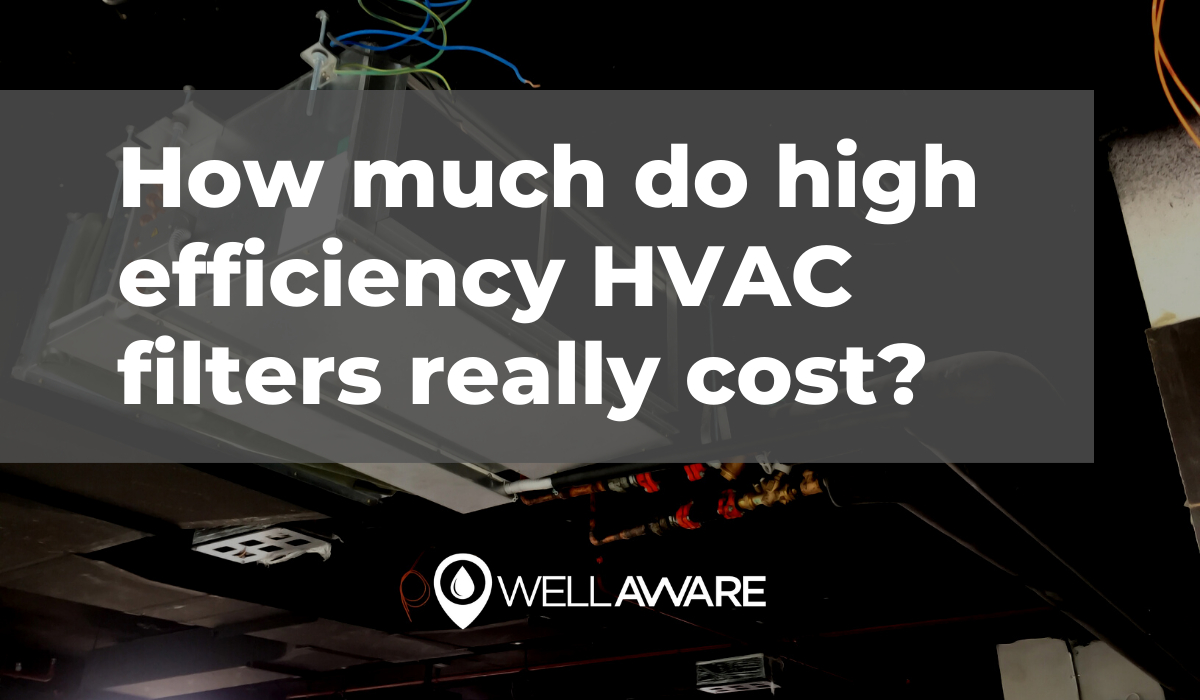
COVID-19 is pushing people all over the world to think more about air filters. The World Health Organization (WHO) has confirmed what many already suspected: the coronavirus spreads through airborne particles, and these particles travel more easily indoors than outdoors.
As a result, administrators are evaluating the effectiveness of their air purification systems. Air filters play a crucial role in creating safe work conditions for employees and customers.
For the current pandemic, ASHRAE specifically recommends high efficiency MERV-13 or MERV-14 filters to capture droplets that contain COVID-19 and other microbes. Unfortunately, most businesses don’t have the infrastructure needed to support these high MERV filter types.
Naturally, facilities managers are asking a few questions:
In this post, we provide a detailed answer to the important question: “How much do high MERV filters really cost?” We’ll talk about the cost of MERV-13 versus MERV-8 filters, and we will also discuss if MERV-13 filters affect energy costs or increase maintenance requirements. Our goal is to help you determine whether you really need a high MERV filter to keep your building safe for the foreseeable future.
The cost of high-efficiency filters depends on several factors. You need to consider not just the cost of a MERV-13 filter itself, but also the added costs to operations that they may create.
First, there is the cost of high efficiency filters themselves. At face value, MERV-13 filters are not that much more expensive than lower efficiency filters. Most buildings today require MERV-6 or MERV-8 filters. Upgrading to high MERV filters costs approximately 25% more per filter.
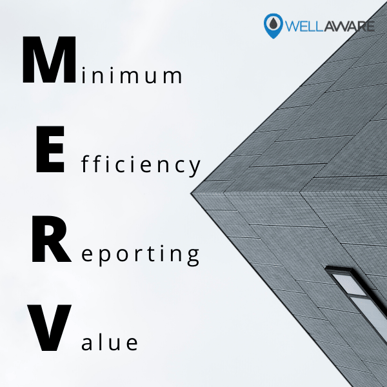 "MERV" stands for Minimum Efficiency Reporting Value
"MERV" stands for Minimum Efficiency Reporting Value
Assuming that facilities managers replace filters on a 90-day schedule, replacing MERV-6 filters with MERV-13 or MERV-14 filters in a 50,000 square foot facility with hundreds of filters could cost between $8,000 to $10,000 more annually. This may not seem like much, but since annual energy costs for most buildings are about $1.50 per square foot this represents up to 13% of the total energy costs for a building!
However, there is more to consider than the cost of the MERV-13 filters themselves or even the manual labor required to replace older filters. There are two other big cost killers that need to be considered:
All air filters cause a pressure drop across the filter as a result of the resistance to the air that they create by filtering out airborne particles. The more resistance the air encounters, the higher the pressure drop, and the harder the HVAC systems have to work to push clean air throughout buildings.
MERV-13 and MERV-14 filters cause relatively high pressure drops compared to MERV-6 filters. Consequently, these filters demand much more effort from HVAC infrastructure. We’ve learned that upgrading to high MERV filters can cause energy costs to increase as much as 18%. This can result in thousands of dollars per year in increased energy costs.
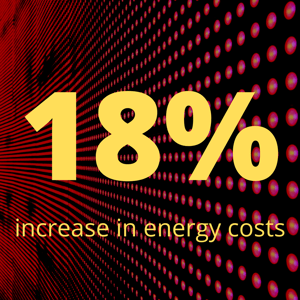 MERV-13 filters can increase energy costs
MERV-13 filters can increase energy costs
Additionally, high MERV filters can decrease air flow by up to 25%, which means more run time is needed to exchange indoor air at sufficient levels. And because facilities managers are running their HVAC systems more frequently during COVID, especially in the few hours pre- and post-occupancy, these costs could be even higher.
Here is where costs really escalate. Many air handlers can’t handle higher MERV filters. They simply weren’t designed to overcome the major pressure drops caused by high efficiency filters.
Most HVAC professionals recommend that air filters should only cause 20% of total pressure drop across an HVAC system. For MERV-13 and MERV-14 filters, the typical pressure drop is about 0.3” WC. Using the 20% benchmark, HVAC infrastructure would have to handle pressure drops of 1.5” WC to support high MERV filters. Unfortunately, most weren’t designed to do this.
Installing high MERV filters in systems that aren’t designed for big pressure drops can have catastrophic consequences. To effectively support MERV-13 and MERV-14 filters, facilities managers may need to upgrade their entire HVAC system, including air handlers, compressors, and ductwork.
Commercial HVAC systems can cost up to $20 per square foot or more. Putting this into perspective, upgrading the HVAC system for a modest 5,000 square foot building could cost up to $100,000! Most business owners simply can’t afford this kind of expense, especially during such an uncertain time.
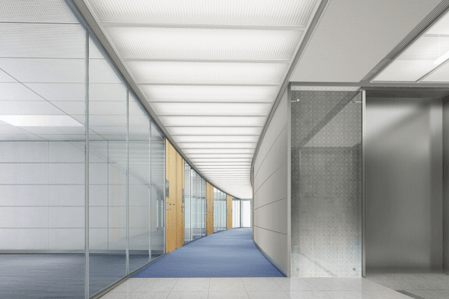
Many offices or other commercial buildings would require expensive upgrades for MERV-13 filters
Fortunately, there are other options. Building managers and business owners are considering a slew of alternatives which encompass a variety of technologies and services.
One such option involves air purification using ultraviolet lights, ionizers, or ozone generators.
However, installing the necessary components for these technologies can also be prohibitively expensive. More importantly, these solutions can be harmful, making them a poor solution for high-occupancy buildings. Additionally, early evidence indicates they haven’t proven to be that effective at eliminating indoor virus threats.
Another option is to use portable, multi-layered air filters that capture and remove aerosols containing airborne microbes. Overall, this path can be much more cost-effective ($0.25 per square foot per month) and easy to implement.
On the downside, these solutions require personnel to design the deployment and ensure air changes occur frequently. Fortunately, some vendors offer smart air purifier services which include everything required to purify indoor air, including air filter monitoring powered by remote connectivity to ensure filter systems are online, providing proof to staff and occupants that air purification is active.
Organizations that are evaluating filter upgrades in large or multiple buildings can also benefit from air purifier fleet management platforms that allow facilities managers to track filter status, forecast when replacement filters are required, and get text alerts when new filters are needed.
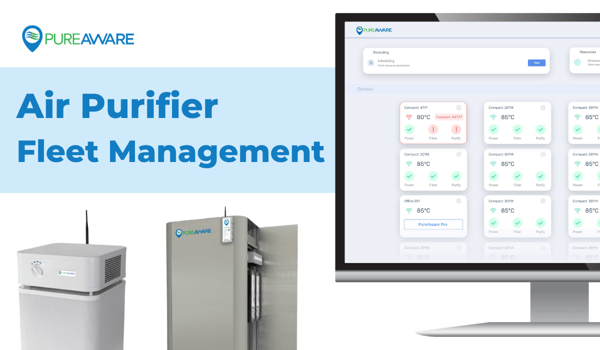
Air purifier fleet management can be an effective way for facilities managers to keep track of air purifiers deployed across facilities.
For many, commercial-grade smart air purifiers can overcome both the cost and implementation challenges of upgrading HVAC to meet the demands created by COVID-19. With these services, you typically don’t have to deal with the headache of upgrading your entire facilities management system, or worry about potential harm or ineffectiveness of other technologies.
At a time when companies are facing economic and safety pressures, turnkey air purification services may be the best solution for bolstering indoor air quality, at least in the short term.
Like what you're reading? Sign up for updates!
Have a Question?